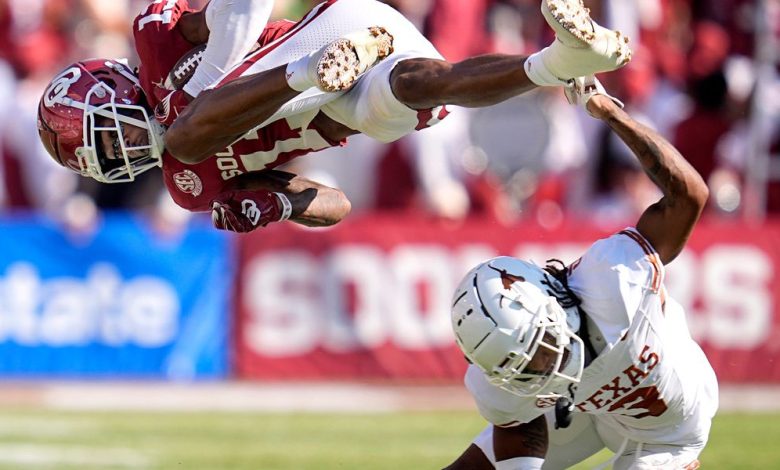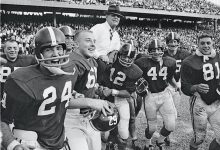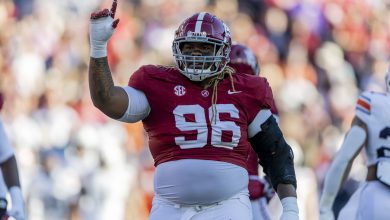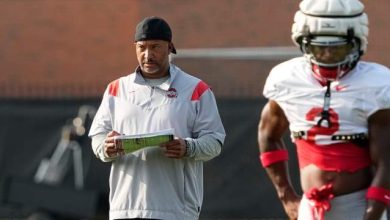The Texas Longhorns fiercely compete for every dollar in Austin’s entertainment scene, driving revenue and shaping the local economy.

Austin, Texas, is often hailed as the “Live Music Capital of the World,” known for its thriving music scene, tech-driven innovations, and growing food and entertainment industries. However, another significant contributor to Austin’s cultural and economic landscape is the University of Texas (UT) and its flagship football team, the Texas Longhorns. While the city’s entertainment scene is famously diverse, the Longhorns fiercely compete for every dollar in the local entertainment ecosystem, directly and indirectly influencing various aspects of the economy. From game-day weekends to recruitment efforts, the Longhorns leave a lasting footprint on Austin’s financial and cultural terrain.
This article will explore how the Texas Longhorns are more than just a powerhouse in college football—they are a dominant force in the city’s entertainment economy. We’ll dive into the economic implications of the Longhorns’ presence, the business of game day, the broader effects on Austin’s cultural identity, and how the team’s operations shape the overall economic landscape.
The Economic Power of Texas Longhorn Football
University of Texas athletics, particularly Longhorn football, is a massive economic engine for the city of Austin and the state of Texas. The football team, one of the most storied programs in college sports, brings in millions of dollars in revenue each year. But the impact extends beyond just ticket sales, with ramifications across various sectors, including hospitality, retail, and tourism.
1. Game Day Revenue
The most direct and immediate impact of the Texas Longhorns on Austin’s economy is on game day. Every home game brings tens of thousands of fans to Austin—many of whom travel from out of town. The average attendance for a Longhorns home game at Darrell K Royal–Texas Memorial Stadium (capacity: 100,000+) generates not only ticket sales but also a significant boost in demand for accommodation, dining, and transportation.
Hotels around the city experience a surge in bookings, often increasing room rates as much as 50% during home football weekends. Fans from across Texas, and even from other states, book rooms to attend the game, while local restaurants and bars see higher foot traffic, especially near the stadium and throughout downtown Austin.
The Longhorns’ influence extends to local businesses as well. Small shops, food trucks, and retailers all benefit from the influx of fans. Tailgate parties, both official and unofficial, also contribute to this boom, with fans spending money on food, drinks, and merchandise. The “game day” atmosphere helps the local economy in ways that are hard to measure but easy to see: Austin becomes a hotspot for sports tourism.
2. Merchandise Sales
Another major revenue stream tied to the Texas Longhorns is merchandise sales. The Longhorns’ orange and white colors are synonymous with the university, and their logo is one of the most recognizable in college sports. Local retail shops, as well as national chains, stock up on Longhorns gear, which includes everything from jerseys and hats to tailgate accessories and home décor.
The Longhorns’ official merchandise store generates millions in revenue every year, with the flagship location at the Texas Memorial Stadium serving as a central hub. Beyond the physical store, there’s also a booming online market, with fans from all over the country purchasing items to showcase their school spirit. In fact, the Longhorns’ merchandise is not only sold locally but is a strong seller nationwide, often topping sales for college athletics brands.
The dominance of UT-branded merchandise further underscores the team’s influence on the city’s retail economy, contributing to Austin’s identity as a sports city and fueling demand for unique local products related to the Longhorns.
Austin’s Entertainment Ecosystem
While the Longhorns’ impact on the city’s economy is most noticeable during football season, their influence is pervasive year-round, affecting the broader entertainment scene in Austin. The city is known for its music festivals, tech conferences, and cultural celebrations, but the Longhorns’ influence competes for attention and dollars within this busy entertainment ecosystem.
1. Competition with Other Events
Austin’s calendar is packed with high-profile events, such as South by Southwest (SXSW), Austin City Limits (ACL) Festival, and Formula 1 racing at the Circuit of the Americas. However, the Texas Longhorns’ football games, particularly when they play against high-profile teams, can easily overshadow or compete with other events in the city.
For example, Longhorn football games often coincide with major festivals or concerts, drawing large crowds away from other entertainment venues. With millions of dollars in local business impacted by game day festivities, businesses in Austin must strategically plan their operations to capture revenue from both sports fans and festival-goers.
Additionally, the Longhorns’ presence puts Austin in direct competition with other sports cities across the nation. In Texas, the Longhorns face stiff competition from the Dallas Cowboys, Houston Texans, and other regional teams, all vying for the same disposable income from sports fans. Despite this, the Longhorns’ brand is deeply embedded in Austin’s identity, making it a powerhouse in the local sports ecosystem.
2. Influence on Local Media and Broadcasting
The Texas Longhorns also command a significant portion of the local media landscape. Local TV stations, radio stations, and streaming platforms all dedicate significant airtime to cover the team’s games, recruiting, and other football-related events. Major sports networks like ESPN and Fox often broadcast Longhorns games nationally, bringing Austin’s name into living rooms across the country and boosting the city’s cultural profile.
These broadcasts are not limited to the fall months. The football program generates year-round media coverage through recruiting, team-building activities, and postseason bowls. These broadcasts contribute to the city’s media economy, with sponsorships, advertisements, and promotions geared toward football fans.
The Longhorns’ Cultural Influence
Beyond the economic impact, the Texas Longhorns play a significant role in shaping the city’s cultural identity. They have been an integral part of Austin for more than a century, and their influence can be felt not only on game day but in local pride, business initiatives, and community events.
1. Building Austin’s Identity
Austin has long been a city where diverse cultural elements coexist. Its music scene is legendary, its tech industry booming, and its food scene diverse and ever-evolving. However, the Longhorns provide an anchor for local pride. Whether it’s an early-season game or the rivalry game against Texas A&M, Longhorns football unites Austinites from different walks of life, bringing together college students, longtime residents, and out-of-town visitors.
The branding of Austin often intertwines with the Texas Longhorns. The iconic Longhorn steer logo is recognized across the state and around the country. This brand recognition becomes an economic tool, as businesses tie their products or services to the Longhorns’ prestigious image, whether through local sponsorships or cross-promotional advertising.
2. Alumni Networks and Community Engagement
Another way the Longhorns influence Austin’s entertainment ecosystem is through their vast alumni network. UT alumni remain deeply connected to the school, and many of them live and work in Austin. This creates a strong sense of community, with Longhorns fans gathering in bars, restaurants, and event spaces to watch games, host tailgates, and attend UT-related events.
The alumni network also contributes to Austin’s economy. Alumni from all over the country and even the world flock to Austin for special events, creating a cycle of engagement that benefits local businesses. From networking events to charitable fundraisers, the Longhorns provide an ever-present thread in the city’s fabric.
The Future of the Longhorns’ Economic Influence
Looking ahead, the Texas Longhorns will continue to play an integral role in Austin’s economic and cultural landscape. As the team transitions into the Southeastern Conference (SEC), it is expected that their national profile will grow, bringing with it even greater economic influence. The Longhorns’ move into the SEC may elevate game-day experiences, bring more prominent games to Austin, and result in additional revenue streams for the city.
Moreover, the advent of NIL (Name, Image, Likeness) deals for players and the growing digital presence of college sports may create new opportunities for the Longhorns to monetize their brand, expanding Austin’s reach even further in the national and global sports market.
The Texas Longhorns are not just a college football team—they are a powerful economic engine in Austin’s entertainment ecosystem. From boosting local revenue through game-day activities to shaping the city’s cultural identity, the Longhorns contribute significantly to the economic and social fabric of the city. While the team faces competition from other sectors of Austin’s diverse entertainment scene, it remains a cornerstone of local pride and economic success. As the team moves into the future, its influence on Austin will only continue to grow, making the Longhorns an essential player in the city’s continued rise as a global entertainment hub.









